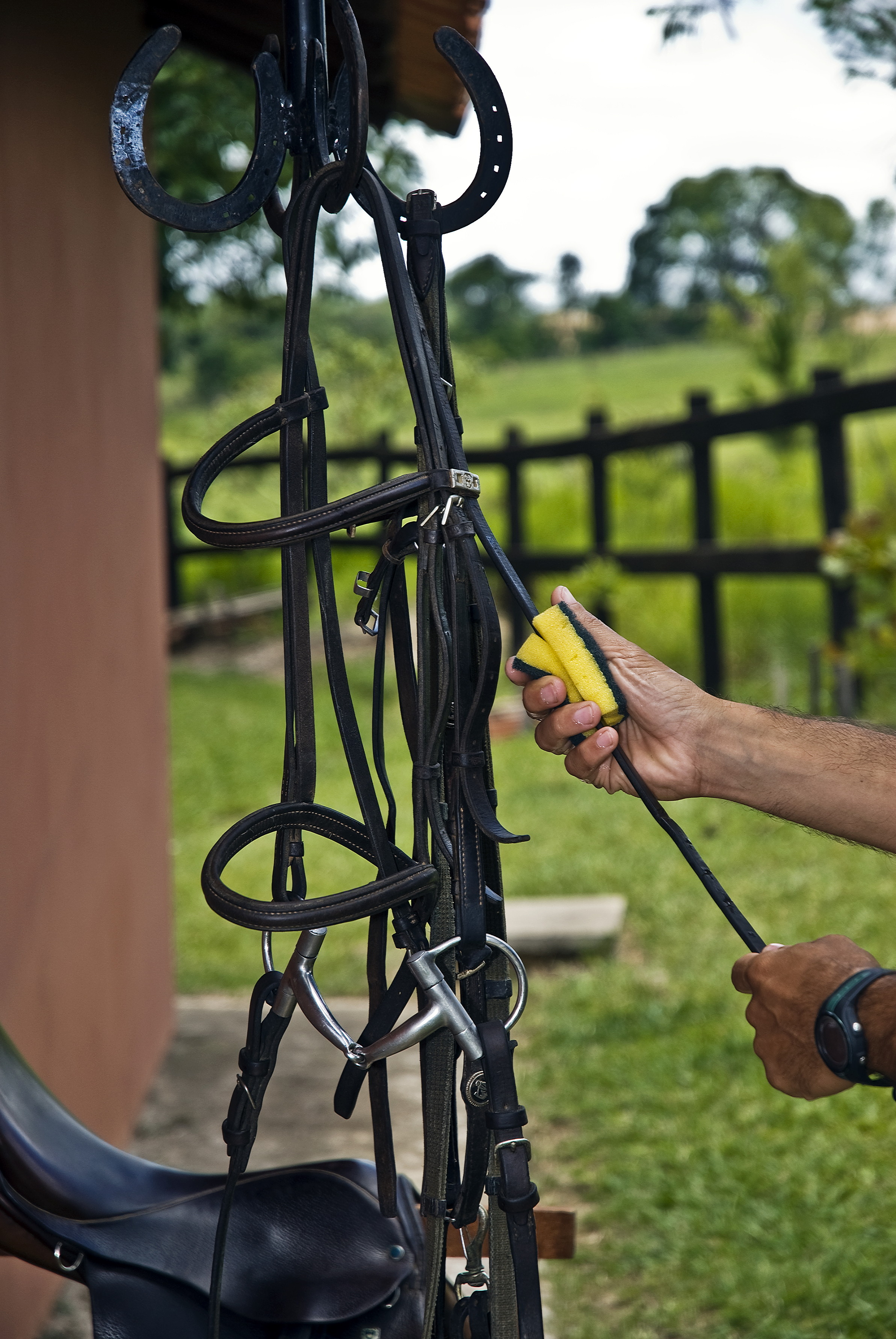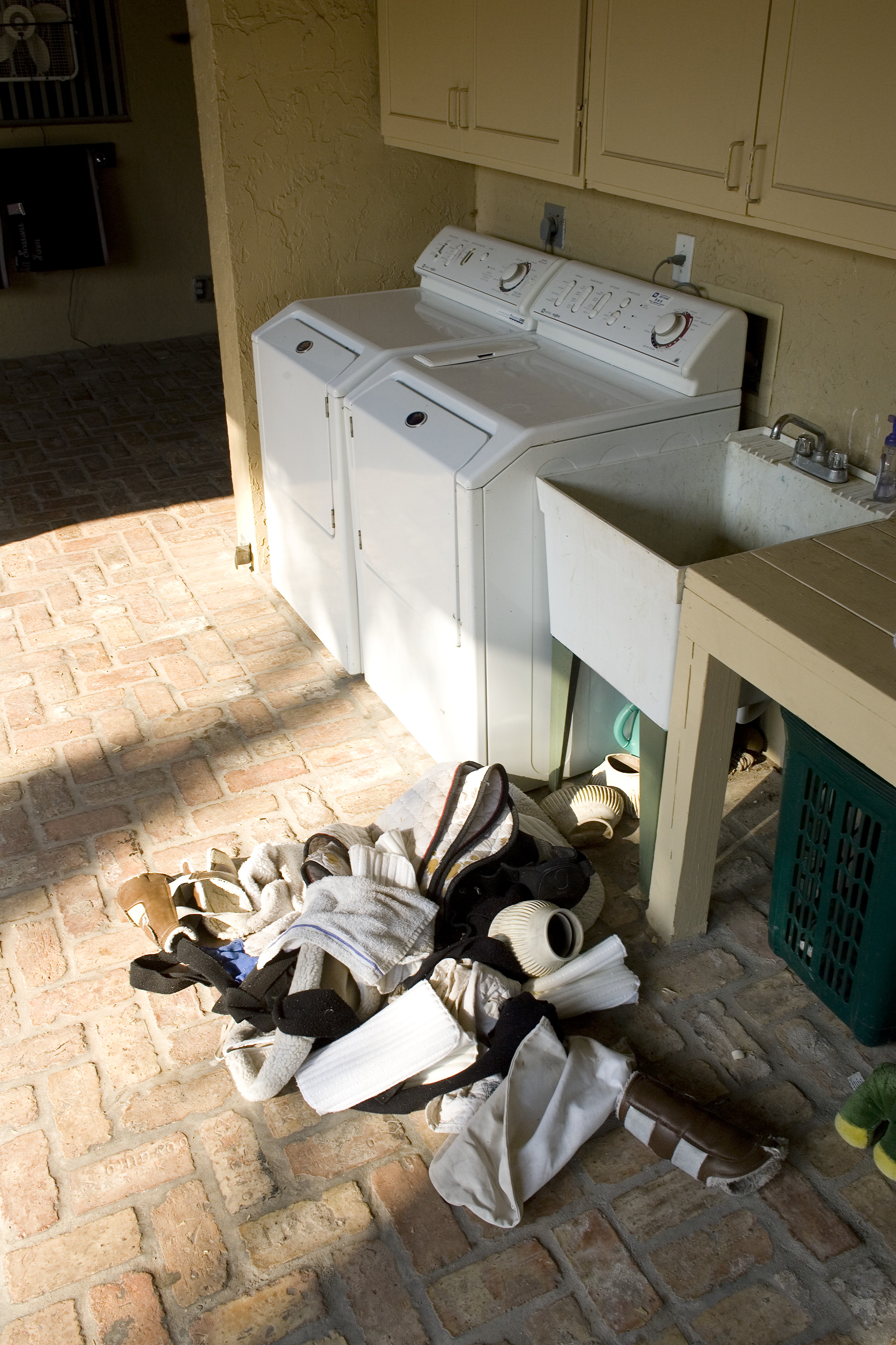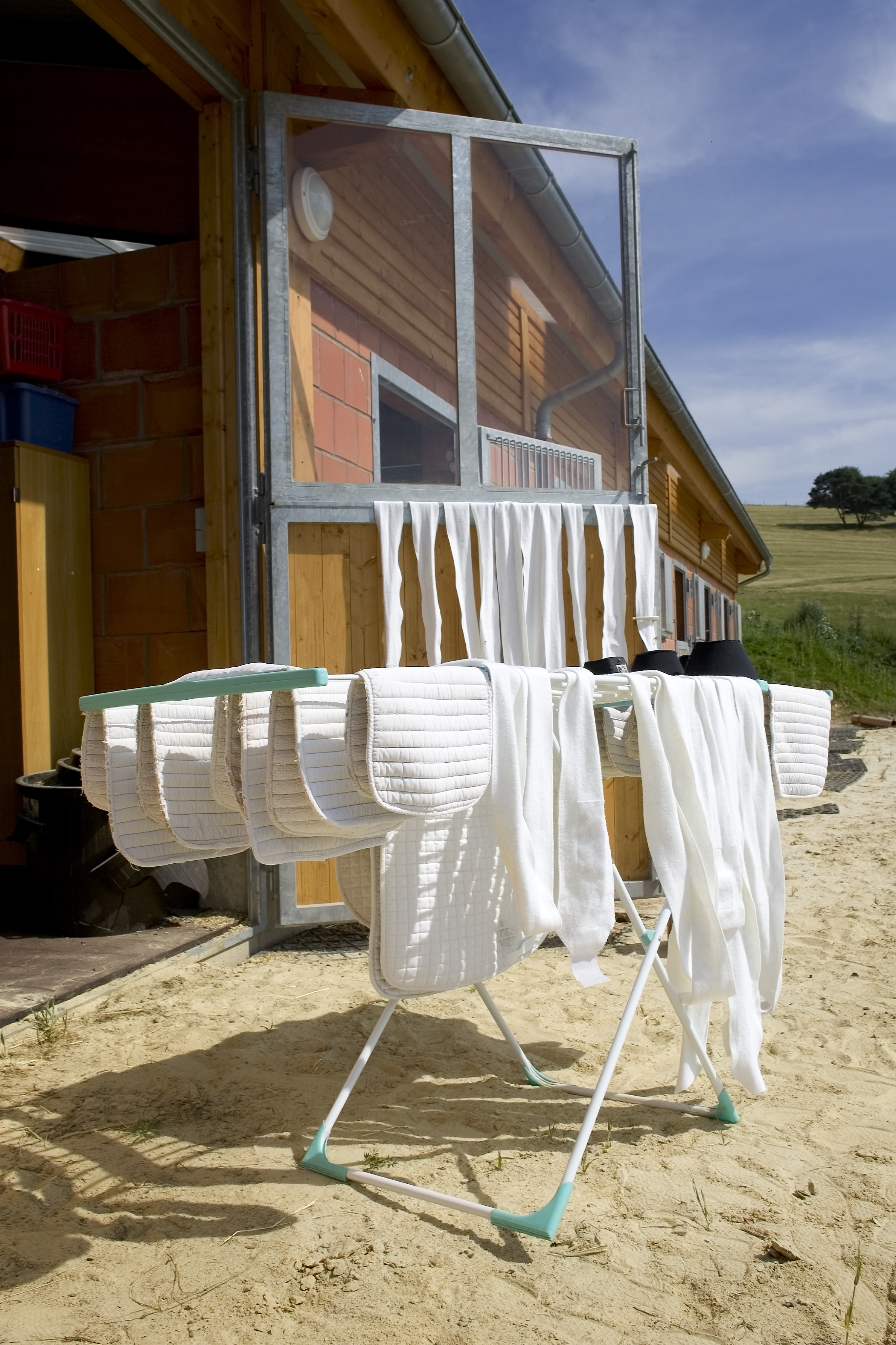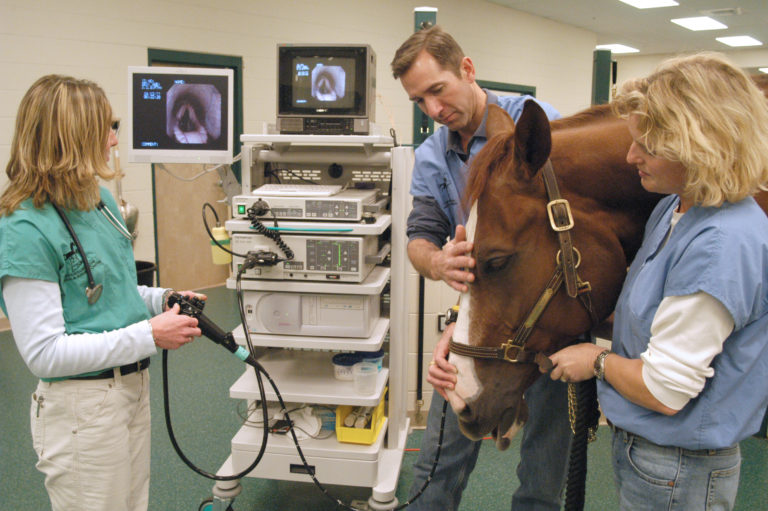Most experienced horse owners recognize the value of appropriately maintaining tack and equipment for practical, financial, safety and sentimental reasons. You have probably developed your own methods and routines, but is there something you could be doing better to extend the wear of your items? Or perhaps there’s an important detail you’re overlooking. What are the best ways to bring your favorite pieces back to life, while maximizing longevity? In this article, equine industry professionals Yvonne Bryant, of Equine TLC, an equine equipment laundering and repair service in Dickerson, Maryland, and Jennifer Hetzler, of Equus Now! tack store in Lewis Center, Ohio, bring to light the best ways to maintain your equestrian equipment and apparel to prolong their life.

DT: How long should you expect most everyday equipment to last?
Yvonne Bryant: I personally believe that the lifespan of any equipment or apparel begins with the quality of the item. I also believe you will get what you pay for. However, items you have purchased on sale are exempt from this thought. Overall, any item used on a daily basis can last anywhere from three to seven years with the right care and maintenance.
Jennifer Hetzler: A saddle can be the second most expensive purchase one can make in his or her riding career, next to the purchase of an actual horse. First, you’ll want to make sure the saddle fits the rider as well as the horse. A saddle that poorly fits the rider, horse or both can cause all sorts of damage. So it is very important to make sure the saddle is a proper fit all around. Saddles can last a lifetime as long as they are properly cared for. Many of today’s saddle makers suggest which products to use on their saddles. Some even make their own cleaners and conditioners. But the leather isn’t the only part of the saddle that needs attention. The flocking in the panels should be inspected about every six months. Each saddle manufacturer may use different types of flocking, therefore, it’s best to follow the guidelines as to how and when to inspect the flocking. The tree of the saddle is very important because that is the frame on which the saddle is built. A saddle with a broken or compromised tree will cause damage to a horse’s back. If you think there is just the slightest problem with the tree of your saddle, a saddle fitter or the saddle expert at your local tack shop will be able to help you out.
• Depending on the type of leather, usage and care, a bridle can last for several years. I’ve seen some inexpensive bridles that are well cared for outlast some very expensive ones simply due to the difference in care. In a best-case scenario, you would have two bridles, one for schooling and the other for shows only. If two bridles aren’t in the budget, then I would suggest investing in the best bridle that fits your horse well and is in your price range. Some bridle manufacturers have specific guidelines on how to break in and care for their products. By following the guidelines, the bridle should last for several years.

• Bits can be made of all sorts of different materials. Some will last a lifetime, while others may last a few years, depending on what they are made of. Most bits made from metal (stainless steel, German silver, sweet iron or copper) can last for several years as long as they are kept clean and free of anything that could cause them to deteriorate over time. German-silver bits do well when they are cleaned regularly and polished when they need it. Bits that are covered or made of rubber will eventually break apart (the rubber part, that is) over time and usage. This can be caused by horses chewing on the rubber. If the rubber has been chewed up and is no longer smooth in the horse’s mouth, it will make the bit very uncomfortable for the horse. A new bit would be recommended. Happy Mouth bits are made of stainless steel and high-tech plastics. These bits should be inspected regularly to make sure there aren’t any rough spots on them that could cause irritation.
• If you wear tall boots every time you ride, it would be a good idea to make sure that they are durable. There are some nice inexpensive boots that can be used for everyday riding and, depending on how many horses you ride daily or how hard you may be on your boots, they can last a few years. Boots that are made of softer leather, such as calfskin, will not last as long if they are used for every day riding. They are designed to be used more for showing or if you only ride in tall boots once in a while. Most tall boots are now made with zippers. It’s important that the zipper is kept clean and clear of anything that would cause teeth to break or make it split. Zipper splitting can be avoided as long as attention is paid to care.
• A helmet is the most important piece of safety equipment a rider can buy. It is very important that the helmet fits properly and meets all of the safety requirements. When selecting a helmet, make sure it is an approved helmet. According to the majority of helmet manufacturers, your helmet should be replaced every four years due to changes in the fit over time or safety approval. These manufacturers also want you to be safe and have crash replacement policies that apply to their helmets. If you have fallen and hit your head, the helmet has been compromised and will need to be replaced. If this happens, refer to the tack shop from which you purchased the helmet for help with replacement according to the manufacturer’s policy.
DT: What are some important considerations when it comes to taking care of leather tack, such as bridles, halters, saddles and riding boots?
JH: The longevity of any leather tack will depend on its initial quality and the care you put into it. Properly taken care of, any leather should last for many years. It is most important to make cleaning your tack a habit. A regular regimen of cleaning any sweat, dust or mud after every ride will be the best thing for your tack. Glycerin soap is the most commonly used soap for tack cleaning because it has conditiong agents as well as cleaning agents. Castile soap is also a very reliable product for all kinds of leather: It balances the pH and does not contain dyes or fragrances. Castile soap, as with all soap, is best used with warm water. Use soap with as little water as possible and remember that your tack should be dried completely after cleaning. The No. 1 rule is to follow the manufacturer’s instructions in the way that the product was made. As a rule of thumb, halters can be treated in a very similar way to bridles. Everyday halters should be cleaned very regularly and dried thoroughly to ensure that any padding and stitching do not become worn. The metal hardware on halters—buckles, nameplates, lead snaps—can and should be cleaned up with wadding polish to prevent any tarnishing.
DT: How should everyday riding boots be cared for?
JH: Riding boots can be treated very similarly to other leather products, with an emphasis on everyday maintenance. After every ride, you should be careful to wipe off any arena dust from the leather, stitching and zippers. If your boots have become muddy or wet, the best thing for them is warm water and a mild glycerin soap, with a spray cleaner for the zippers. This should be dried completely, with any remaining residue wiped off as well.
Polish is best for covering up sun bleaching or shining after everyday use. Be sure to only use a conditioning polish, however, as some types are known to crack and harden the leather. As always, follow the manufacturer’s instructions on how to best take care of your tack.
DT: When should conditioner versus oil be used?
JH: Think of leather the same way you think of your skin. How often do you use oil treatments versus hand lotion? It is the same with oil and conditioner. Conditioner is best used once a week or every other week, depending on the condition of your tack. Conditioner is great for keeping your leather goods soft, supple and clean. Oil, on the other hand, should only be used on rare occasions. It is best used for softening new tack or darkening brown leather. If you buy a used saddle, for example, oil can help soften the stiff leather. Both are best applied at room temperature with your hands, which help massage the product into the pores of the leather.
DT: What is important to know about keeping bits clean and shiny?
JH: The most important thing to remember when cleaning up bits is not to dunk them in water after every ride. This is a very common mistake that people make. Dunking exposes the leather holding the bit and the reins to constant wet-dry conditions, causing the stitching to wear and leather to crack. Simply using a damp cloth, toothbrush or even bit wipes is much safer for your bridles. Bits must also be kept clean constantly. If you were a horse, you wouldn’t want a dirty bit in your mouth. It is very important to make a habit of cleaning your bit properly every day. Many bit polishes exist on the market, some for particular brands of bits, that can help keep your bits looking new. When searching for a bit polish, be sure to find a nontoxic brand. This can be applied anywhere on the bit, from the rings to the mouthpiece, as long as the polish is thoroughly rinsed afterward.
DT: What kind of care does my horse’s waterproof turnout blanket require?
YB: Turnout blankets should be cleaned once a year with a blanket-safe cleaner. From a technical standpoint, dirt attracts water. It is possible to have a turnout blanket so dirty that it will take on water and not be waterproof anymore. A good- quality turnout blanket can last more than 10 years.
DT: What are the best ways to keep machine-washable items in their best shape?
YB: When you are trying to keep saddle pads, polo wraps, horse boots, stable sheets, blankets and gloves clean, the best thing is to frequently wash them in clear, cold water. It is not necessary to use a cleaning agent on these items every time they are laundered. If you clean them with water frequently, you will be amazed at how clean they can remain. However, the quality of the item and how it was made will dictate things like pilling and shedding.

DT: What do I need to know about keeping my favorite pair of breeches in clinic-ready condition? What are the most durable kinds of fabrics?
YB: Breeches should be cleaned after every two or three rides in clear, cold water. Do not put breeches in the dryer or in with any equipment and apparel for the horse or barn. Anything made of elastic, with any type of stretch and give, will not perform after frequent trips through the drier. Anything that stretches will lose the ability to stretch when exposed to constant heat. The best (and safest) way to dry any apparel is by natural air dry or by using the air dry setting on your dryer. The air-dry setting will also take the hair off items. My full-seat breeches have lasted more than three years and look almost new and I use clear, cold water to wash them every two rides, even after hot, sweaty days. I have not noticed any positive difference in my breeches when cleaned with detergent. There is no particular fabric that is most durable when it comes to breeches. Breeches come in four- and two-way stretch, and thicknesses vary. How much you ride will dictate the longevity of your breeches. Again, the thickness is definitely a factor in the longevity.

DT: Are there certain laundry detergents available that are best at removing tough stains?
YB: Detergents generally cannot and will not take out grass stains, blood and other types of stains, regardless of what the company may claim. Specific stains should be addressed by hand with a mild clothes (as in for human clothing) detergent and then put in the washer with cold water.
DT: What is the best way to care for show coats?
YB: Show coats made from wool and linen should always be cared for by a professional dry cleaner. I recommend cleaning these at least once a year (or more, if they get particularly dirty or sweaty). Their cleanliness, as well as the quality of storage, will determine how often they should be cleaned. Some people store show coats (along with other similar items) in the barn, where rodents can access items or where the air is humid and mold can develop. I’ve seen people store their coats in their trailers as well and this can be just as bad.
Summer shows can be extremely hot, making sweat an issue. It’s fine to machine-wash a coat as long as it is meant to be machine-washed. Just because a coat is polyester does not mean it is machine washable; nor does a wool coat always have to be dry-cleaned. But if it’s machine washable, I would recommend a long wash with clear water (without detergent). It’s amazing how clear water can clean items. Use a cleaner if you wish or if needed for stains and smells that won’t come out. Clean as often as you feel you need to do so.
DT: Is it safe to wash some equestrian items together? Are there items that are not compatible?
YB: It is perfectly safe to wash polo wraps with saddle pads in clear water. However, you should never combine towels with any other apparel or equipment. Towels will shed lint and other fibers onto other pieces in the wash, especially polo wraps. Sometimes cleaning polo wraps in a net bag will help keep them from becoming too tangled. I would normally wash up to six wraps at a time to make untangling easy. Polo wraps do not need long washing cycles. You may want to clean them with saddle pads. Also, always be sure to attach the Velcro to keep them from clinging to each other. Another little shortcut I have used on large volumes (20 to 50 wraps) is to lightly tie about four wraps together. They clean just as well, but don’t tangle as much.
DT: How can I best care for my riding helmet?
JH: Depending on the manufacturer, helmet care can vary. Two common mistakes I see people make is leaving their helmets in hot cars (which can make the shell of the helmet actually detach itself) and putting their helmet in the dishwasher. These are both very bad ideas! Many brands have removable liners. If you are going to buy a helmet with a removable liner, my suggestion is to buy two liners: the one in the helmet and an extra one. Because these liners should not go in the dryer, they can take a while to dry. An extra liner will allow you to keep riding when your other liner is drying. For helmets without a removable liner, particularly those without much ventilation, there are helmet sprays and deodorizers available. I would recommend waiting until your helmet is dry and fairly clean (you can brush it with a soft brush or cloth) and spray it in a well-ventilated area, out of direct sunlight or high temperatures.
When cleaning the outside of matte helmets, glycerin soap can be used with a clean sponge or towel. To get the most dust off a helmet with a faux-velvet finish, use a nail brush or a slightly damp towel or shammy cloth.
DT: What is the best way to clean stubborn Velcro strips on my horse’s equipment?
YB: A wire dog brush is a fantastic way to clean Velcro hooks. The Velcro hook is the prickly part that manages to capture debris. This should be cleaned out of your polo wraps, brushing boots, saddle-pad keepers and the chest closures on blankets. The hooked Velcro that holds pieces together, such as on brushing boots, is usually the most frequently replaced item. Under two-year daily use, the Velcro will become dead and weakened, especially the chest captures of blankets.
DT: Body clippers are a big investment. How can I maximize their longevity?
JH: Body clippers are definitely an expensive item that many people want to keep in good condition for many years. Always avoid holding on to the clippers by the cord. The machine is very heavy and can detach from the cord easily. Allowing a horse to step on the cord of the clippers is also a very bad idea. The best thing you can do for your clippers is to keep them clean, oiled and sharp. Before clipping your horse, be sure that he is as clean as possible. Clipping dirty horses will hurt the motor, dull the blade and make it difficult to clean the clippers afterward. If your blades do become dull, it is best to replace them or, if available, use a nearby sharpening service.
After every use, and even while clipping, it’s a good idea to utilize a soft brush to remove all dust and hair from the blades. Use blade wash, cooling spray and oil as much and as frequently as the manufacturer recommends. Generally, use blade wash before and after clipping. Cooling spray should be used during clippings and you can also oil them as needed. Again, the manufacturer of your clippers will give you the best directions.
When caring for your equestrian tack, apparel and equipment, the most important thing to remember is to follow the manufacturer’s instructions. From leather to metal to motors, keeping your belongings clean and in good repair is the most effective way to maximize their longevity.











